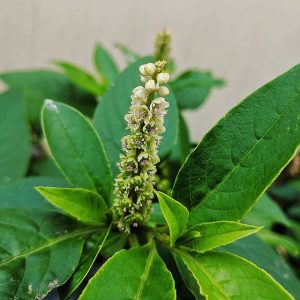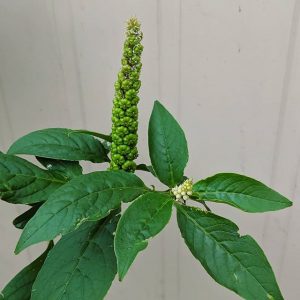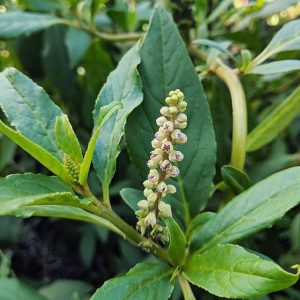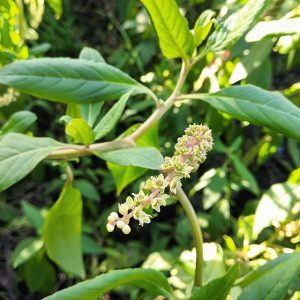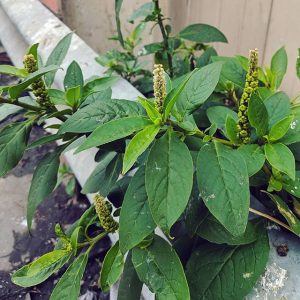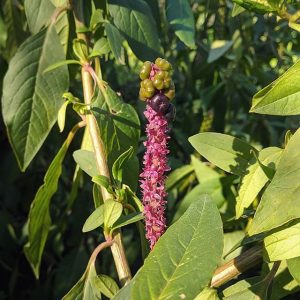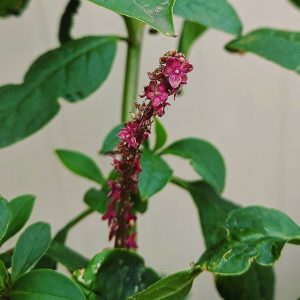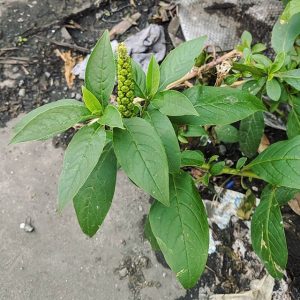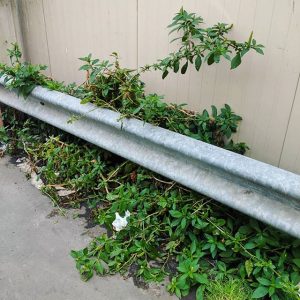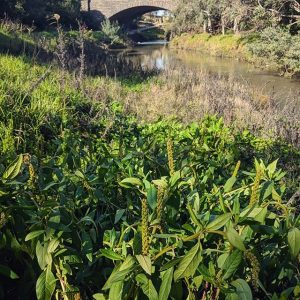Inkweed (Phytolacca octandra), a toxic Central American colonist of disturbed and low-nutrient sites.
Similar to the American pokeweed that was popular as a medicinal tincture, it is possible that this related species was brought to Australia on that basis. One newspaper treatment from the early 1880s suggested that the species had ‘long been naturalised about Sydney.’
Inkweed was described then as ‘nearly invariably appearing in enormous quantities on newly cleared land. I have seen many an abandoned clearing (made, I suppose, to meet the requirements of the Land Act) that had become after a few years a mass of dense scrub, phytolacca, and vines… ten times worse than the original forest’ (Sydney Mail 1889). The plant was so prevalent around Sydney that up in the region of the Hunter and Hastings Rivers it apparently became known as ‘Parramatta’ (Maitland Weekly Mercury 1898).
A Victorian collection was made in 1889 near Horsham. By 1914, newspapers called Inkweed ‘widespread’ in the state, with complaints it was ‘spreading and smothering native shrubs in the Werribee gorge.’
Like many weeds of public concern, Inkweed was a symptom of land devastated by wasteful or unsustainable agricultural practices. It was a severe problem at Werribee and Melton, where the Staughton trustees petitioned for a gazettal. The Dept of Agriculture called it ‘a tremendous drain on the resources of the land’ (Melton Express 1917) and proclaimed it locally as a ‘thistle’.
Decades later, a Melbourne Weekly Times column continued to prescribe a war footing against Inkweed: ‘Red ink plant should be looked upon with great caution and is best eradicated by preventing the formation of seed. Harrow or hoe out all seedlings and plough or pull out all shrubs from the soil after rain. Burn all plants in fruit to kill seed … Next week: Hemlock’ (1949).
Inkweed has not disappeared, and remains well-established around Port Phillip Bay, and in further clusters throughout country Victoria. The photographed plants were growing on banks of the Merri Creek and in an industrial lane in Footscray.
View Original Post on Instagram
Search for information about Phytolacca octandra in the Flora of Victoria
View information and occurrences of Phytolacca octandra on the Atlas of Living Australia

